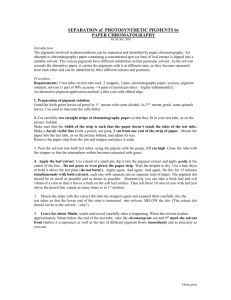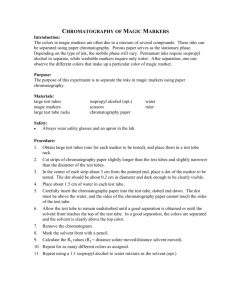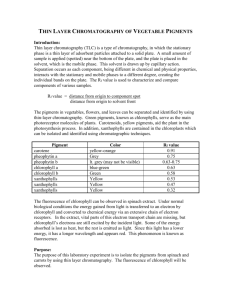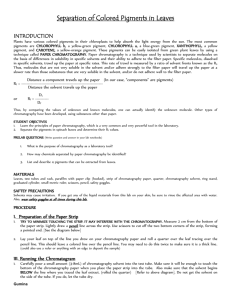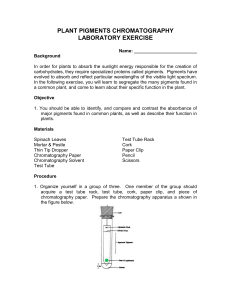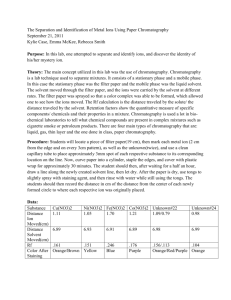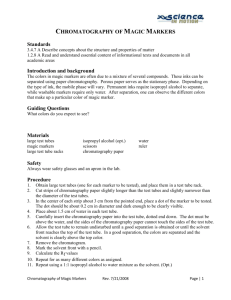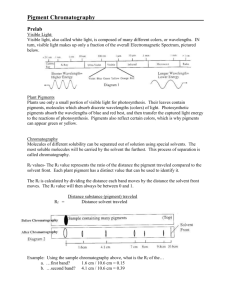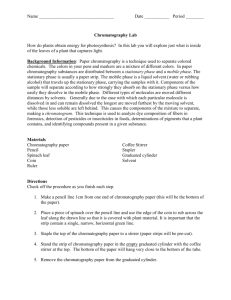Unit 1: - A-level chemistry
advertisement
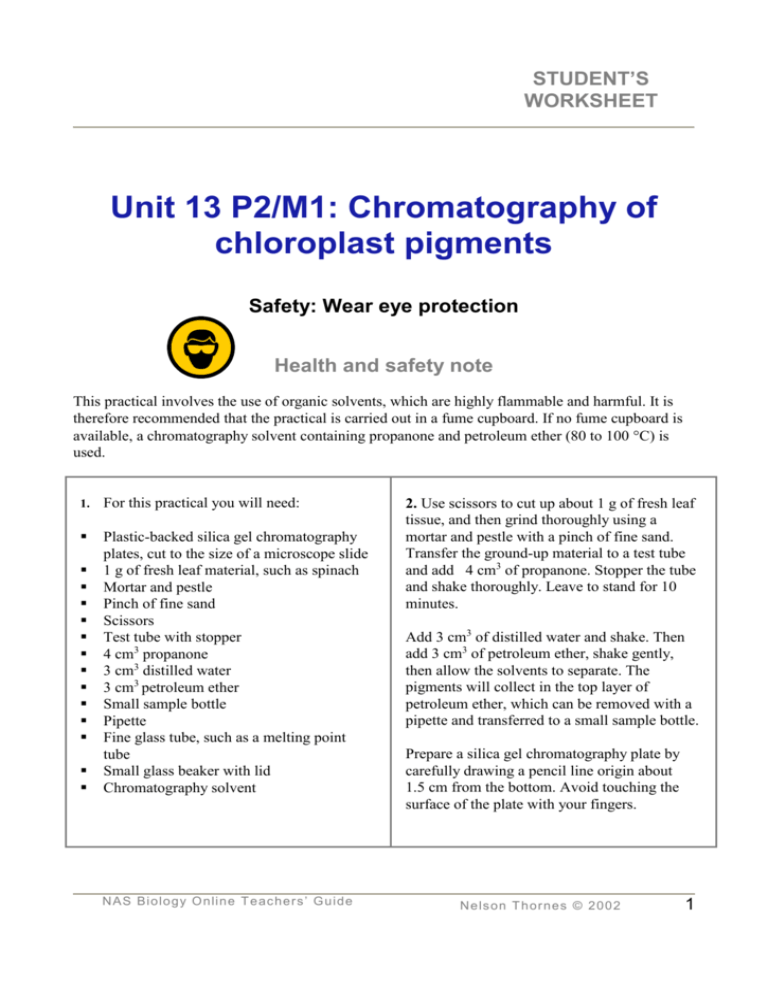
STUDENT’S WORKSHEET Unit 13 P2/M1: Chromatography of chloroplast pigments Safety: Wear eye protection Health and safety note This practical involves the use of organic solvents, which are highly flammable and harmful. It is therefore recommended that the practical is carried out in a fume cupboard. If no fume cupboard is available, a chromatography solvent containing propanone and petroleum ether (80 to 100 C) is used. 1. For this practical you will need: Plastic-backed silica gel chromatography plates, cut to the size of a microscope slide 1 g of fresh leaf material, such as spinach Mortar and pestle Pinch of fine sand Scissors Test tube with stopper 4 cm3 propanone 3 cm3 distilled water 3 cm3 petroleum ether Small sample bottle Pipette Fine glass tube, such as a melting point tube Small glass beaker with lid Chromatography solvent NAS Biology O nline T eac her s ’ G uide 2. Use scissors to cut up about 1 g of fresh leaf tissue, and then grind thoroughly using a mortar and pestle with a pinch of fine sand. Transfer the ground-up material to a test tube and add 4 cm3 of propanone. Stopper the tube and shake thoroughly. Leave to stand for 10 minutes. Add 3 cm3 of distilled water and shake. Then add 3 cm3 of petroleum ether, shake gently, then allow the solvents to separate. The pigments will collect in the top layer of petroleum ether, which can be removed with a pipette and transferred to a small sample bottle. Prepare a silica gel chromatography plate by carefully drawing a pencil line origin about 1.5 cm from the bottom. Avoid touching the surface of the plate with your fingers. Nels on T hornes © 2002 1 3. Use a fine glass tube to transfer the pigment extract to the centre of the origin line. Briefly touch the surface of the plate with the end of the tube. Allow the petroleum ether to evaporate, and then repeat the process several times to make a small, concentrated spot of pigments. 4. Make a careful drawing to show the positions and colours of the separated pigments. You could calculate the Rf values for the pigments. Rf values are defined as the distance moved by the spot (measured to the centre of the spot) from the origin, divided by the distance moved by the solvent (from the origin to the solvent front). Stand the plate in a small, covered beaker containing the chromatography solvent. The level of the solvent MUST be below the level of the pigment spot. Allow the solvent to rise until it reaches about 1 cm from the top of the plate (the solvent front). Remove your completed chromatogram and allow the solvent to evaporate. Rf values of some chloroplast pigments NAS Biology O nline T eac her s ’ G uide Nels on T hornes © 2002 2
